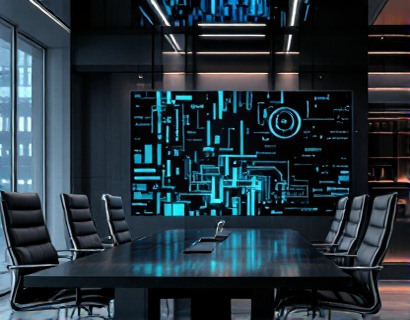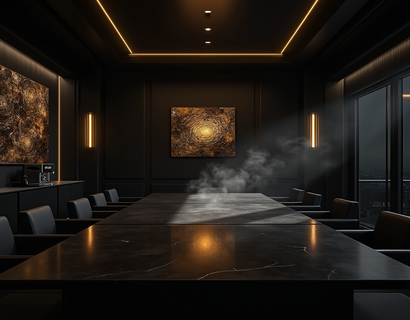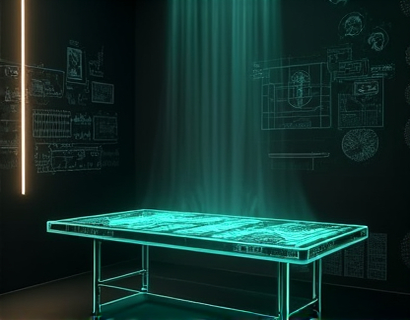Maximizing Architecture Firm Efficiency with Advanced Software Solutions
In the competitive landscape of architecture firms, efficiency and productivity are paramount. Advanced software solutions play a crucial role in streamlining internal processes and enhancing user experience, allowing architects to concentrate on their creative excellence. This article delves into the various ways technology can optimize project management, resource allocation, and client interactions, ultimately leading to improved overall performance and collaboration within architecture firms.
Streamlining Project Management
Effective project management is the backbone of any successful architecture firm. Advanced software solutions offer robust tools that simplify the planning, execution, and monitoring of projects. These platforms provide centralized dashboards where team members can track progress, manage timelines, and allocate resources with precision. By automating routine tasks such as scheduling and reporting, these tools reduce the likelihood of human error and free up valuable time for more strategic activities.
One key feature of these software solutions is the ability to integrate with other tools and systems used within the firm. For instance, seamless integration with CAD software, BIM tools, and ERP systems ensures a smooth workflow, minimizing the need for manual data entry and synchronization. This integration not only saves time but also ensures that all team members are working with the most up-to-date information, reducing miscommunications and delays.
Enhancing Resource Allocation
Efficient resource allocation is critical for maintaining project timelines and budgets. Advanced software solutions provide sophisticated resource management capabilities that help architecture firms optimize the use of their human and material resources. These tools allow firms to visualize resource availability, track utilization rates, and make informed decisions about staffing and material procurement.
For example, some software platforms offer predictive analytics that forecast resource needs based on historical data and current project requirements. This proactive approach enables firms to avoid overstaffing or understaffing, ensuring that resources are always allocated where they are most needed. Additionally, these tools can help identify underutilized resources, allowing firms to reallocate them to other projects or initiatives, thereby maximizing overall efficiency.
Improving Client Interactions
Client satisfaction is a key driver of success for architecture firms. Advanced software solutions enhance client interactions by providing tools that facilitate communication, collaboration, and transparency. Virtual reality (VR) and augmented reality (AR) technologies, integrated into these platforms, allow clients to visualize projects in a more immersive and interactive way. This not only improves client understanding and satisfaction but also helps in gathering valuable feedback early in the design process.
Project management software also includes features such as client portals, where clients can access real-time project updates, view documents, and communicate with the design team. These portals ensure that clients are always informed and engaged, reducing the likelihood of misunderstandings and delays. Moreover, automated notifications and reminders help keep both the firm and the client on the same page, ensuring that deadlines are met and expectations are managed effectively.
Boosting Collaboration and Productivity
Collaboration is essential in the architecture industry, where multiple stakeholders, including architects, engineers, contractors, and clients, need to work together seamlessly. Advanced software solutions foster collaboration by providing collaborative workspaces where team members can share files, discuss ideas, and make decisions in real-time. These platforms often include chat and video conferencing tools, eliminating the need for multiple email threads and disparate meeting schedules.
Version control is another critical aspect of collaboration. Advanced software ensures that all team members are working with the latest versions of documents and designs, reducing the risk of conflicts and errors. Change management features allow for easy tracking of modifications, ensuring that everyone is aware of the latest design iterations and can provide input as needed.
Enhancing User Experience
The user experience (UX) of software solutions is vital for adoption and effectiveness within an architecture firm. A well-designed interface that is intuitive and user-friendly can significantly improve productivity and reduce training time. Advanced software solutions are developed with a focus on UX, incorporating feedback from users to continuously refine and enhance the user experience.
Customization options are also important, allowing firms to tailor the software to their specific workflows and needs. This flexibility ensures that the tools are not only efficient but also aligned with the unique processes and culture of each firm. Additionally, mobile accessibility is increasingly important, enabling team members to access project information and collaborate on the go, further enhancing productivity and responsiveness.
Case Studies and Real-World Applications
Several architecture firms have successfully implemented advanced software solutions to transform their operations. For instance, a mid-sized firm in New York leveraged a comprehensive project management platform to streamline their workflow. By integrating this tool with their existing CAD and BIM software, they reduced project completion times by 20% and improved client satisfaction ratings by 15%. The firm's managers reported that the platform's real-time reporting and resource allocation features were particularly beneficial in managing large, complex projects.
Another example is a large international firm that adopted a collaborative workspace solution to enhance team coordination. The firm's global teams, spread across multiple time zones, found it challenging to collaborate effectively. The new software provided a centralized platform for file sharing, communication, and project tracking, leading to a 30% increase in cross-team collaboration and a significant reduction in project delays.
Future Trends and Innovations
The architecture software industry is rapidly evolving, with new technologies and innovations on the horizon. Artificial intelligence (AI) and machine learning are expected to play a more significant role in automating routine tasks and providing predictive insights. For example, AI-powered tools can analyze project data to identify potential risks and suggest optimal solutions, further enhancing decision-making processes.
Additionally, the integration of Internet of Things (IoT) devices in construction sites can provide real-time data on site conditions, equipment performance, and worker safety. This data can be fed into software platforms, offering deeper insights and enabling more informed management decisions. As these technologies mature, they will continue to drive efficiency and innovation in the architecture industry.
Conclusion
Advanced software solutions are indispensable tools for architecture firms looking to maximize efficiency and enhance user experience. By streamlining project management, optimizing resource allocation, improving client interactions, and fostering collaboration, these tools enable architects to focus on their creative vision while ensuring that business operations run smoothly. As the industry continues to evolve, embracing these technologies will be crucial for staying competitive and delivering exceptional results.










































